The Hybrid 1012 was developed as a more versatile export variety of the Hybrid 44 bin. Like the Hybrid 44, the 1012 lowers initial shipping costs and provides increased packing and shipping efficiencies. The purpose of this guide is to review all aspects for the safe use of the Hybrid 1012 Series bin.
Table of Contents
- Bin Transportation
- Loading a 40’ HQ Shipping Container
- Corner Irons and Cables
- Flatbed Single or Double Trailers
- Bin Movement – Forward/Backwards
- Bin Movement – Side to Side
- Bin Loading on Trailers
- Straddle Lift Trailers
- Pick-Up Trucks and Small Trucks with Flatbeds
- Storage
- Maximum Capacity and Stack Weight Limits
- Interstacking
General Usage
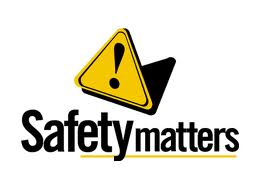
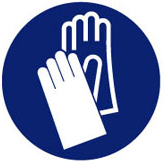
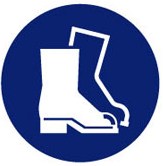

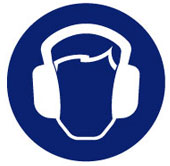
Component Parts

| Component | Name |
|---|---|
| 1 | Basket |
| 2 | Corner column |
| 3 | Foot |
Unstacking Process
Hybrid 1012 bins are shipped new with the plastic baskets nested together in stacks and the columns and feet loaded in the top basket.
Tools/equipment may be necessary to unstack the nested baskets. A video of this process can be viewed at this link.
- Hang straps on forklift forks. Make sure forks are level to ground and clamp straps to make a square configuration as shown in the picture.


- Lift and position forks directly above stack of nested baskets. Lower forks so that the metal hook on the strap can be hooked under basket lip. Note: To reduce the amount of lifts needed, lift half of the stacked basket during first lift.


- Ensure that each hook is securely placed under the top rim of the basket. Make sure the hooks are not putting force on the ribs located inside the rim.


- Lift stack of baskets up and then move forklift back to make space to lower stack. Lower the stack to the ground and unhook straps.
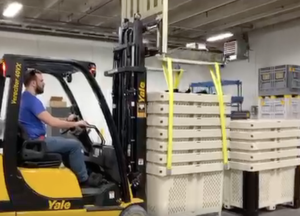
- At this point you may be able to safely unstack any remaining baskets that are low to the ground. If not, continue unstacking using the previous steps.
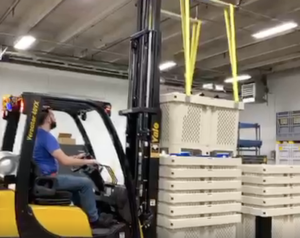
Stacking Process
A video of this process can be viewed at this link.
- Hang straps on forklift forks. Make sure forks are level to ground and clamp straps to make a square configuration as shown in the picture.


- Position forks over basket so that straps can hook under the basket lip near the 4 corners.


- Make sure the hooks are not putting force on the ribs located inside the rim. Lift the forks above so that the hooks are securely placed under the rim of the basket.


- Raise the basket so it will clear the height of the basket stack where you will deposit your bin.
- Move the forklift forward and adjust the forks so that the basket is positioned directly over the stacked baskets. Lower the basket so that it is nested. Lower the forks slightly more than needed to unhook straps.
Assembly Process
No tools are needed for assembly or disassembly of the bin.
Video assembly/disassembly instructions can be watched at this link.
- Turn Basket upside down so basket is facing down.
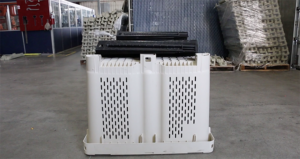
- Note the A or B markings on the columns and match the columns with the corresponding corners of the basket.


- Slide the columns down so that the square tabs on the column click into place on the basket.


- Feet come in short foot and long foot styles. The Hybrid 1012 is a rectangular bin and the foot will only fit one way on the basket. Align the feet with the columns and push down to click feet into place. The square tab on the feet will click into the square openings on the column and basket and will lock the bin together.


Disassembly Process
- Turn bin upside down so basket is facing down.
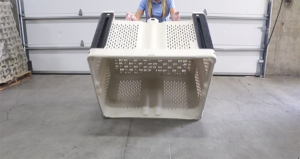
- Press the rectangular clips with the markings shown below on the foot and pull foot upwards to release each section of the foot. There are 3 foot release clips located at each point that the foot connects to the basket. You may need to press the square clips located on the columns to fully release the foot.
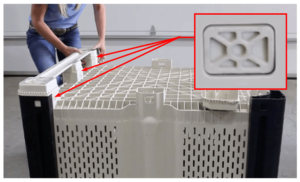


- Press the release clip on each column and pull upwards to release the column.
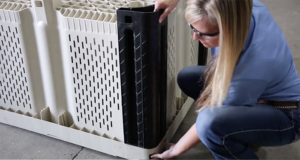
- Baskets can be nested to save space on storage and shipping.
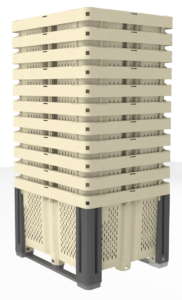
Safe Usage
The Hybrid 1012 has been designed for the harvesting, transportation, and storage of fruit, vegetables, and other types of commodities. All Hybrid tubs are molded from materials that have been tested and are in compliance with FDA guidelines for food contact.
The Hybrid 1012 must be used in accordance with design specifications that are outlined on the product specification sheet. Product specification sheets are available from Macro Plastics’ Sales Representatives, the Technical Services Department, or online at www.macroplastics.com and should be fully reviewed before Hybrid 1012 bins are used. The following must be observed:
- When storing materials other than agricultural commodities, when treating commodities stored in Hybrid 1012 bins or when cleaning or sanitizing, the resistance of PP to degradation due to contact with these chemicals should be reviewed. This should be done by contacting your sales Representative, or the Customer Service Department. If there is any doubt as to the suitability of chemicals used on Hybrid 1012, testing should be completed to ensure the Hybrid 1012 will not be damaged from long-term contact with the chemical in question.
- Heavy objects should not be dropped onto the floor of the bin as they could damage the bin floor.
- Holes should not be drilled in the bins as any modification to Hybrid 1012 bins will void the warranty and may negatively impact the structural integrity of the bins.
- Hybrid 1012 bin stacks must not be pushed over or off of trucks onto hard surfaces such as concrete.
- Hybrid 1012 bins should be periodically inspected for structural damage to the corner columns. This is very important in applications where Hybrid 1012 bins are stacked, as the corner columns bear most of the load. Any cuts or cracks that damage the interior support ribs of the corner columns may cause structural failure in a stack. Hybrid 1012 bins with damage to the corner column should be taken out of service and inspected. If only the column is damaged, it can be removed and replaced with a new column. Spare parts can be ordered through your sales representative. If damage is more extensive, the damaged parts should be recycled.
DOs and DON’Ts
The following notes are recommendations to help maintain the useful life of your Macro Plastics Bins, and warn of common mistakes made when handling the containers, that can cause harm and reduce the useful life of the containers. Like anything, there are countless ways to mistreat or misuse the bins, so this list is not all inclusive, but rather delineates basic norms on the use of Macro Plastics bulk containers.

Safe Handling Practices
Bin Transportation
Bins must be secured to the vehicle used for transport in a manner that eliminates bin movement while the vehicle is moving, even if only a single bin is involved. All bins should be forced together without space between them to form a unitized load. The U.S. Department of Transportation (DOT) does not currently have a commodity specific cargo securement technique for the transport of bins. To understand the most effective cargo securement techniques for the interstate transport of Hybrid 1012 bins, the DOT – Federal Motor Carrier Safety Administration (FMCSA) has the Federal Motor Carrier Safety Regulations (FMCSRs) available on the FMCSA website at www.fmcsa.dot.gov. The general cargo securement requirements are listed under 49 CFR 393.100 – 393.114.
For intrastate travel, tie-down methods must comply with local regulations regarding bin hauling. It is the responsibility of the user to ensure they are in compliance with these regulations. Internet links to truck-related regulation web sites for all 50 states are listed in the index at the end of this User Guide. This information will be updated periodically at www.macroplastics.com. The U.S. Department of Transportation – Federal Motor Carrier Safety Administration (FMCSA) has the Federal Motor Carrier Safety Requirements available on the FMCSA website at www.fmcsa.dot.gov. The general cargo securement requirements are listed under 49 CFR 393.100 – 393.114. Some of the more widespread bin transportation methods are outlined in this section
Loading a 40’ HQ Shipping Container – Short Foot

The following configuration maximizes the amount of unloaded Hybrid 1012- SF bins in a 40’ HQ container and allows for easy loading and offloading. A 40’ HQ has an internal length of 12024mm and width of 2347mm. The Hybrid 1012 has a bin footprint of 1200mm and width of 1000mm. In this configuration there are 22 pallet locations available for two types of pallet stacks (A and B). These stack types are described in detail below:
| Pallet stack type A: 20 stacks | |||
| Qty | Part Name | Location |  |
| 1 | Hybrid 1012 SF (fully assembled) | Base of stack | |
| 11 | Hybrid 1012 bin baskets | Nested on top of assembled bin | |
| 22 | Hybrid 1012 Column-A | Inside of top basket | |
| 22 | Hybrid 1012 Column-B | Inside of top basket | |
| Pallet stack type B: 2 stacks | |||
| Qty | Part Name | Location |  |
| 4 | 55 Short Feet packs | Packed into 1000x1200x620mm super sack or box and stacked vertically on top of a low-profile export pallet (1000x1200x102mm). Pack as shown in pictures below | |

| Total count/ 40’ HQ: 240 Hybrid 1012 Bins | |
| Qty | Part Name |
| 240 | Hybrid 1012 bin baskets |
| 480 | Hybrid 1012 Column-A |
| 480 | Hybrid 1012 Column-B |
| 480 | Hybrid 1012 Short Feet |
Layout Illustration:

Loading a 40’ HQ Shipping Container – Long Foot

The following configuration maximizes the amount of unloaded Hybrid 1012- LF bins in a 40’ HQ container and allows for easy loading and offloading. A 40’ HQ has an internal length of 12024mm and width of 2347mm. The Hybrid 1012 has a bin footprint of 1200mm and width of 1000mm. In this configuration there are 22 pallet locations available for three types of pallet stacks (A, B and C). These stack types are described in detail below:
| Pallet stack type A: 18 stacks | |||
| Qty | Part Name | Location |  |
| 1 | Hybrid 1012 LF (fully assembled) | Base of stack | |
| 11 | Hybrid 1012 bin baskets | Nested on top of assembled bin | |
| 22 | Hybrid 1012 Column-A | Inside of top basket | |
| 22 | Hybrid 1012 Column-B | Inside of top basket | |
| Pallet stack type B: 3 stacks | |||
| Qty | Part Name | Location |  |
| 4 | 32 Long Feet packs | Packed into 1000x1200x620mm super sack or box and stacked vertically on top of a low-profile export pallet (1000x1200x102mm). Pack as shown in pictures below | |

| Pallet stack type C: 1 stack | |||
| Qty | Part Name | Location |  |
| 1 | Hybrid 1012 LF fully assembled | Base of stack | |
| 7 | Hybrid 1012 basket | Nested on top of assembled bin | |
| 14 | Hybrid 1012 column-A | Inside of top basket | |
| 14 | Hybrid 1012 column-B | Inside of top basket | |
| 1 | 26 Long feet pack | Feet packed into 1000x1200x620mm super sack or box with same internal dimensions and stacked vertically on top of a low-profile export pallet (1000x1200x102mm). Stack as shown above in type B stack packs, but top layer only has 2 feet for a total of 26 feet. | |
| Total count/ 40’ HQ: 240 Hybrid 1012 Bins | |
| Qty | Part Name |
| 224 | Hybrid 1012 bin baskets |
| 448 | Hybrid 1012 Column-A |
| 448 | Hybrid 1012 Column-B |
| 448 | Hybrid 1012 Short Feet |
Layout Illustration:

Corner Irons and Cables
In many areas of the country, corner irons and cables are utilized in the transportation of empty bins or bins filled with agricultural produce. Due to the angled corners of Hybrid 1012 bins, corner irons used to secure wood bins or traditional MacroBins, may not be as effective as a corner iron specifically designed for the Hybrid 1012 bin corner column. To eliminate this problem, it is highly recommended that corner irons be used that satisfy the following guidelines:
- The corner iron sides must be at least 5” wide.
- The cable hook should be 12” to 24” from the top of the bin in use.
- The top hook should be designed to hook over the corner column, NOT in the center of the bins. The use of “V-Boards” for support may be best in some cases.
V-Board Example

Corner irons can be purchased from:
- Local Utility Trailer Dealer – For the closest location go to www.utilitytrailer.com.
Flatbed Single or Double Trailers
Hybrid 1012 bins offer distinct advantages over wood bins when hauling on trailers due to the interlocking feature of the foot with the top of the top edge of the bin beneath it. This allows for proper positioning while stacking Hybrid 1012 bins. The upper bin will not fall into the bin below and a more stable block is formed when corner irons and cables are used to contain the bins.
To minimize sliding issues when transporting Hybrid 1012 bins, precautions should be taken to prevent bins from sliding forward or backward, as well as side-to-side.
Bin Movement – Forward/Backward
The force of the wind hitting the front stack of bins tends to force the load on a trailer to the rear. Also, depending on the locations of the winches and hooks, cables can force the block forward, back, or just inward and down. A sudden stop may cause the bins to slide forward. 49 CFR 393.102 of the FMCSA general cargo securement rules require that any securement system prevent movement of the load in a 0.435g deceleration in the forward direction or a 0.5g deceleration in the rearward direction. To ensure that this is done, Macro Plastics recommends that all rows be secured with cargo securement devices meeting the requirements of 49 CFR 393.104 and 393.108 of the FMCSA general cargo securement requirements. In addition to using the proper cargo securement devices, the following points should be considered:
- Use trailers with front bulk heads.
- Weld angle irons tops to the front and rear of the trailer.
- If stake holes are present at the front and rear of the trailer, stakes can be placed in these holes.
Above options must all comply with the requirements of 49 CFR 393.104.
Bin Movement – Side to Side
As double trailers are pulled down the highway, the rear trailer can sway from side to side creating the potential for side drift of bins. Hard corners and high winds further contribute to this problem, increasing the probability of side drift. The FMCSA cargo securement regulation 49 CFR 393.102 states that loads must be secured to prevent movement in 0.25g lateral acceleration. To ensure that this is done, Macro Plastics recommends that all rows be secured with cargo securement devices meeting the requirements of 49 CFR 393.104 and 393.108 of the FMCSA general cargo securement requirements. If winches are not present, suitable rope can be used.
See 49 CFR 393.108 in the FMCSA general cargo securement regulations.
Bin Loading on Trailers
- When loading Hybrid 1012 bins onto trailers the following guidelines are recommended:
- On trailers without a headboard or other stops at the front and rear of the trailers, it is recommended that stakes be put in place before loading, if stake pockets are available. Stakes should be placed at both ends of each of the trailers and comply with 49 CFR 393.104.
- Load the bins starting at the bulkhead end of the trailer with the bins placed tight against the bulkhead, stakes, or stops. The bin stacks should be loaded tightly together to form a unitized block. It is important to pack the bins tightly together before corner irons and cables are put into place. This will require less force to be applied to the corner irons and cables to pull the bins together, as all bins must be touching when the tie-down is complete.
- After all bins are loaded, corner irons should be put into place so cables can be fitted. To help with fitting corner irons, provisions should be made to safely lift corner irons onto empty bin loads stacked four high. Corner irons, cables, clamps, as well as attachment and anchor points on trailers must be inspected before each use to ensure they are in good condition. See 49 CFR 393.104 of FMCSA Cargo Securement Rules.
- Cables should then be put in place and tightened.
- Cables are needed to securely hold down the load and force bins together tightly. Over-tightening the cables can cause deformation of the corner columns, so care must be taken when tightening cables.
- To ensure that the load is secure as possible, Macro Plastics recommends that each row of bins be secured using straps which meet the requirements as specified in DOT Federal Motor Carrier Safety Regulation (FMCSR) 393.104, in addition to the corner irons and cables. The cargo securement system used must meet the general cargo securement requirements as listed under 49 CFR 393.100 – 393.114.
- The load should be checked after fifty miles of travel to ensure that it is still secure. If needed, the cables and cross ties should be tightened again to ensure that bins are still packed tightly together, as bins may shift during transit causing slack in the cables. Tightening the cables at this time is a very important step and must not be neglected. Additional checks should be made for longer trips as per 49 CFR 392.9.
- Posted speed limits should be strictly adhered to.
Straddle Lift Trailers
No special handling is required when using straddle trailers. Existing straddle platforms consist of steel tubing or wood timbers connected with four or five cross-members. The base of the Hybrid 1012 bin enables it to be used on straddle platforms that have not been modified for traditional MacroBin use.
Pick-up Trucks and Small Trucks with Flatbeds
When transporting empty or full Hybrid 1012 bins in a pick-up truck or small flatbed, the bin or bins must always be secured and covered to prevent loss of the bin or its contents. On flatbeds, bins must be strapped down as on larger flatbed trailers. After securing a bin, it should be checked to ensure it cannot move. In addition to securing the bin, it is also imperative that the tailgate be closed. If the truck does not contain hooks or cleats to secure a bin, or there is no tailgate in place, bins must not be transported in this truck. It is also essential that nothing is placed in the space between the bin and the tailgate. When transporting bins of differing heights, the taller bin should be secured against the cab, out of the wind stream, and the shorter bin should be placed toward the rear of the truck bed. The secured bin should be checked periodically to ensure that it continues to be secure for transport.
Storage
With their interlocking foot design, consistent dimensions, and dimensional stability over time, Hybrid 1012 bins offer significant improvements over wood bins in space utilization and room filling efficiency. Hybrid 1012 bins stack straight, reducing the space required between bins, and in many cases increasing storage volume significantly. Empty Hybrid 1012 bins can be stored outside, as they are molded using a state-of-the-art UV stabilization system. Recommendations for the safe storage of full or empty bins are as follows:
- Hybrid 1012 bins should always be stacked on hard level surfaces. When stacking more than four high, bins should only be stored in blocks of at least two stacks side by side. In general, the higher the stack, the wider the block. This will reduce the risk of bins being blown over by high winds.
- When Hybrid 1012 bins are stored more than four high, they should be located in an area away from personnel activity. Unauthorized individuals should be kept away from bin stacks.
- Care should be exercised when de-stacking non-vented Hybrid 1012 bins outdoors as the stack could be top heavy as a result of rainwater accumulation in the top bin.
Maximum Capacity and Stack Weight Limits
Hybrid 1012 bins have been designed to perform within specific maximum load capacities and stacking tolerances. For capacity and stack weight limits for Hybrid 1012 bins, please refer to Macro Plastics product specification sheets.
Interstacking
It is essential to ensure that load stresses are transferred in the designed manner in a stack of bins. To achieve this, Hybrid 1012 bins have been designed with an interlocking foot which ensures the proper bearing of loads. Under no circumstances should MacroBins be interstacked with wood bins or other manufacturer’s plastic bins. Furthermore, the dimensions and interlocking systems differ between individual MacroBin models. Hybrid 1012 bins must only be interstacked with other Hybrid 1012 bins with an identical pallet/foot base design.
Handling Equipment
Forklift Handling
The following rules should be followed when transporting empty bins on forklifts:
- Travel in reverse, as bins obstruct visibility in forward direction.
- Travel with forks tilted back, to prevent bins from sliding off forks in sudden stops.
- Make sure the forks are raised high enough to prevent the rear corners of the feet from dragging along the ground.
- Slow when cornering or driving over rough surfaces as empty bins may tip or bounce off of the forks.
- If the bins start to tip, quickly lower the forks so the feet contact the ground, stabilizing the stack.
- Never transport more than four bins high on a forklift.
- Maintain fork tips to ensure there are no large burrs or sharp edges as this will reduce damage to the radiused forklift entry area.
- When forklift rotators are used for dumping bins, rotator systems utilizing a clamp are recommended to prevent any movement of the bin when dumping.
Bin Trailers
Most bin trailers should require no modifications to handle Hybrid 1012 bins. Modification is required when the top of the rollers are below the level of the top of the frame. This may cause the bin foot to rest on the frame instead of the rollers, thus preventing the bin from easily rolling off the trailer. In such cases, the rollers must be raised to a point where the top of the roller clears the top of the frame. This will allow the bin to roll freely. Depending on the height, the rollers must be raised. This can be done by either:
- Removing the rollers and adding a sleeve to increase the roller diameter.
- Re-drilling and raising each roller to clear the frame.
Motorized Bin Carriers
Most motorized bin carriers can handle Hybrid 1012 bins with no modifications. The issue that may arise is the ability of the bin to travel in the recessed chain tracks. On some models, the path down the inside of this track is blocked by bolts or features along the frame preventing the bin from freely traveling on the chains as the inside edge of the foot impacts on the inside frame. On some models, bolts must be shortened to allow the bin to freely travel on the chains.
Packinghouse Equipment
Hybrid 1012 bins generally work very well with a vast majority of packinghouse dump lines. Their consistent dimensions result in higher bin throughput and increased productivity.
Destackers
Most destacking equipment will handle Hybrid 1012 bins with little or no modifications needed. It is also advisable to adjust the present guides, or to add guides, to ensure that the Hybrid 1012 bins is centered between the lifting dogs before being raised. The best way to test the compatibility of Hybrid 1012 bins with your equipment is to fill some bins up with product and run them through the line.
Dumpers
No modifications to dumpers should be required when dumping Hybrid 1012 bins.
Stackers
As with destackers, most stacking equipment will run Hybrid 1012 bins with little or no modifications. Running Hybrid 1012 bins through the equipment will determine the compatibility of the bin with your equipment.
Floaters
MacroBins have easily run through all floaters that they have been tested in. MacroBins have the added bonus of plastic construction allowing them to be immersed in water indefinitely without affecting the structural integrity of the bin.
Pre-Sizing Lines
MacroBins have been tested on many pre-size lines without issues. The dimensional stability and higher concentration of venting can result in smoother operation of filling lines.
Cleaning
Hybrid Bins can be cleaned using a high-pressure spray washer. High-pressure steam cleaners should never be used.
Maintenance
Hybrid 1012 bins component parts can be easily replaced if damaged. If the plastic basket is damaged, it can be repaired using a hot air welding gun. See the User Guide section on hot air welding.
Recycling
If bins are damaged beyond repair, they can be recycled. Visit www.macroplastics.com/services/recycling/ to get information on how to recycle your worn-out bins.
